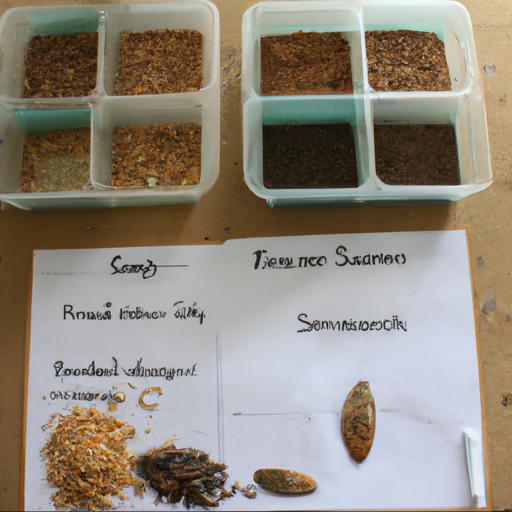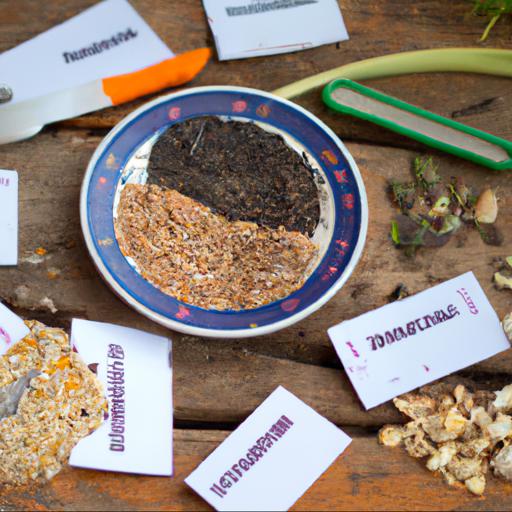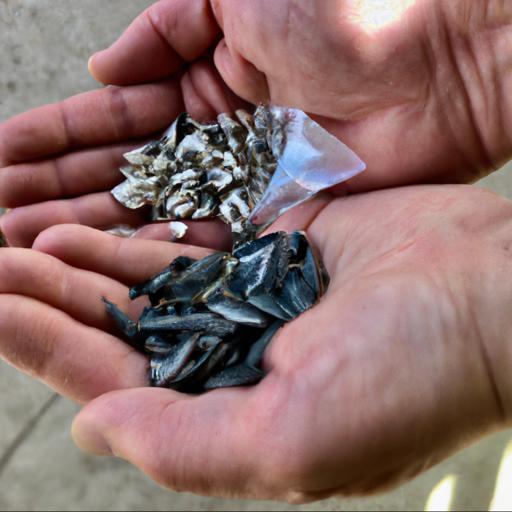Are you looking to save your own vegetable seeds? It can be a great way to save money and ensure you have a reliable source of veggies for your garden.
In this blog, we’ll discuss the basics of how to save your own vegetable seed, from planning and harvesting to storing and replanting. We’ll also look at the benefits of saving your own seed and the potential challenges you may face. So, if you’re ready to get started, read on to learn how to save your own vegetable seed.
Understanding the basics of seed saving

As any savvy gardener will tell you, saving your own vegetable seed is an invaluable way of propagating the plants you grow and ensuring a steady supply of healthy, organic product year after year. But the basics of seed saving can appear tricky for those who are relatively new to gardening. So, here’s an overview of the fundamental facts you need to get started.
The key to successful seed saving is knowing when to harvest the seed. Usually, vegetables will produce seed when the plant is mature and goes to flower.
For example, tomatoes should generally be left on the vine until their fruits have fully ripened and begun to change color. After harvesting the fruits, the seed can be removed and kept in cool, dry conditions until needed. Some vegetables won’t necessarily go to flower and produce seed – such as onions and leeks – and so have to be harvested just before they reach maturity.
To ensure you acquire top-quality seed in such cases, the best thing is to wait until the base of the plant has started to turn yellow. This indicates the vegetable has reached the peak of its development and is ready to be harvested.
In either case, when saving seed, it’s important to choose the best specimens. Hybridization of different varieties can occur if you grow more than one type of vegetable or one type of flower in close proximity.
So, you should only save seed from open-pollinated (non-hybrid) plants of the desired variety in order to maintain the strain’s integrity. In summary, seed saving doesn’t have to be complicated – but it’s important to understand the basics if you are to end up with a viable seed crop. By taking care to know when to harvest and how to select the best plants, you’:ll be well on your way to ensuring a steady supply of your favorite veggies for years to come.
Preparing your garden for seed saving

Saving your own vegetable seeds can be a great way of ensuring that you’re only using varieties that are well-suited for your garden and your region, and can be an economical way of getting your plants for the next growing season. The key to successful seed saving is making sure that your vegetables are adequately prepared.
With the right care and steps, you’ll be well on your way to saving your own seeds. The first step in saving your own seeds is making sure that you identify the vegetables that you want to save from your garden. It’s important to make sure that each vegetable you choose is a non-hybrid variety that produces viable seeds.
Non-hybrid varieties are also more likely to produce true-to-type offspring than hybrid varieties. Additionally, specializing in a few plants rather than attempting to collect seeds from all plants in your garden is often a better option.
Once you’ve identified the plants you’d like to save seeds from, it’s important to note when each one is ready to be harvested. For example, cucumber and tomato seeds should be allowed to ripen fully before harvesting. When the fruit begins to rot, that’s the perfect sign that the seeds are ripe and ready to be collected.
For broccoli and cauliflower, the seed heads should be taken as soon as they’ve fully developed. Then, you should separate the seed heads from the stalk and allow them to dry completely before proceeding.
Finally, cleaning the seeds is essential for successful seed saving. If necessary, you can do this with a sieve or a fanning mill. With the sieve, you should spread out the seeds and shake them gently against the mesh.
The sieve will catch the chaff and the broken pieces of seed, and the remaining seeds can be transferred to an airtight container and stored in a cool, dry place. Proper preparation is key to successful seed saving, but with a few simple steps, you’ll be able to save your own vegetable seeds in confidence.
Collecting and storing your seeds

Collecting and storing your own vegetable seeds is a simple and cost-effective way of growing your own produce year after year. Whether you are an experienced green-fingered guru or a beginner who just likes playing in the dirt, understanding the basics of how to save your own veg seed can help you make the most of every harvest. In order to collect and store seeds, one must first understand the basics of seed biology.
To start, you’ll need to find an open-pollinated variety of vegetable that is well-suited to your local climate and soil conditions. These vegetables should have been grown for several generations to help ensure a more robust and successful crop.
Once the vegetables have ripened, you’ll need to harvest their seeds. Depending on the plant, this may involve carefully removing each seed from the pod, collecting the seed from the blossom, or gently shaking the plant over a container.
Once the seeds have been collected, it’s time to prepare them for storage. This can be done by gently cleansing the seeds to remove any remaining fruit or flesh, allowing them to air dry, and then thoroughly drying them in an oven set to temperatures no higher than 130°F. Once the seeds have been thoroughly dried and cooled, they should be stored in an airtight container in a cool, dark place to keep them viable until the next planting season.
With a little bit of care and attention, it is possible to collect, store and germinate your own vegetable seeds.
Tips for successful seed saving
Gardening is an incredibly rewarding activity and there are myriad benefits to growing your own vegetables. One of the most satisfying experiences a gardener can have, however, is when they are able to save their own vegetable seed. This can be a great way to save money and make sure that your vegetables are true to type, self-pollinating and hardy, as you are selecting the strongest plants and saving their seeds to use the following year.
To successfully save your vegetables, you need to be aware of the plant’s life cycle and how seed saving works with different vegetables. An example of a vegetable suitably hardy for seed saving is the parsnip.
As soon as the parsnips start to flower, you can find new seedlings formingright next to the original plants. Then, once the flowers dry and the seed heads look like brown, papery cups, you know that the seed is ready to collect. When it comes time to do so, you must take great care to ensure you are selecting from the healthiest plants and that the soil is not too wet as this will mould the seeds.
Once the seeds are selected, you should carefully place them in an airtight container or envelope, storing them in a cool, dark place until it’s time to sow them in the following planting season. Saving seed is not just for root plants though – perennials, annuals, and traditional fruit and vegetables can all have their seeds collected, provided the appropriate steps are taken at the right time.
It is important to note that some seed saving techniques should only be done by experienced gardeners and that others may require isolation distances and cross-pollination (self-pollinated) considerations. To make sure that you are saving in an ecologically responsible way, try to save as much of your crop as you can rather than just a few plants, encourage the local pollination in your area with native plants, and adhere to local regulations when using specialist equipment. In conclusion, seed saving can be a very enjoyable and rewarding pastime that enables you to easily multiply your crops without having to buy seeds every year.
By understanding the life cycle of the vegetables and the best techniques for collection, it is easy to successfully save your own vegetables. With the right techniques and some attention to detail, anyone can learn how to save their own vegetable seed.
Final Touch
Saving your own vegetable seeds is a great way to save money and have access to a variety of vegetables. Start by selecting the varieties you want to save and harvesting the seeds at the right time.
Clean and dry the seeds before storing them in an airtight container in a cool, dry place. Label the containers with the variety and date of harvest. With a little effort, you can have your own vegetable seed supply for years to come.
FAQ
What are the benefits of saving your own vegetable seeds?
The benefits of saving your own vegetable seeds include cost savings, increased genetic diversity, and the ability to select for desired traits. Additionally, it can be a fun and rewarding experience to grow and save your own vegetable seeds.
What vegetables are best for saving seeds?
Some of the best vegetables for saving seeds are tomatoes, peppers, beans, peas, squash, and cucumbers.
How do you store vegetable seeds?
Vegetable seeds should be stored in a cool, dry place in an airtight container.
What is the best way to collect vegetable seeds?
The best way to collect vegetable seeds is to allow the vegetables to fully mature on the plant, then harvest the seeds and dry them in a cool, dry place.
How do you prepare vegetable seeds for planting?
To prepare vegetable seeds for planting, you should first soak them in water overnight to soften the seed coat. Then, you should plant them in a potting mix that is moist and well-draining. Finally, you should cover the seeds lightly with soil and water them thoroughly.
What precautions should be taken when saving vegetable seeds?
When saving vegetable seeds, precautions should be taken to ensure the seeds are stored in a cool, dry place away from direct sunlight and moisture. Additionally, the seeds should be labeled with the variety and date of collection, and stored in airtight containers.

